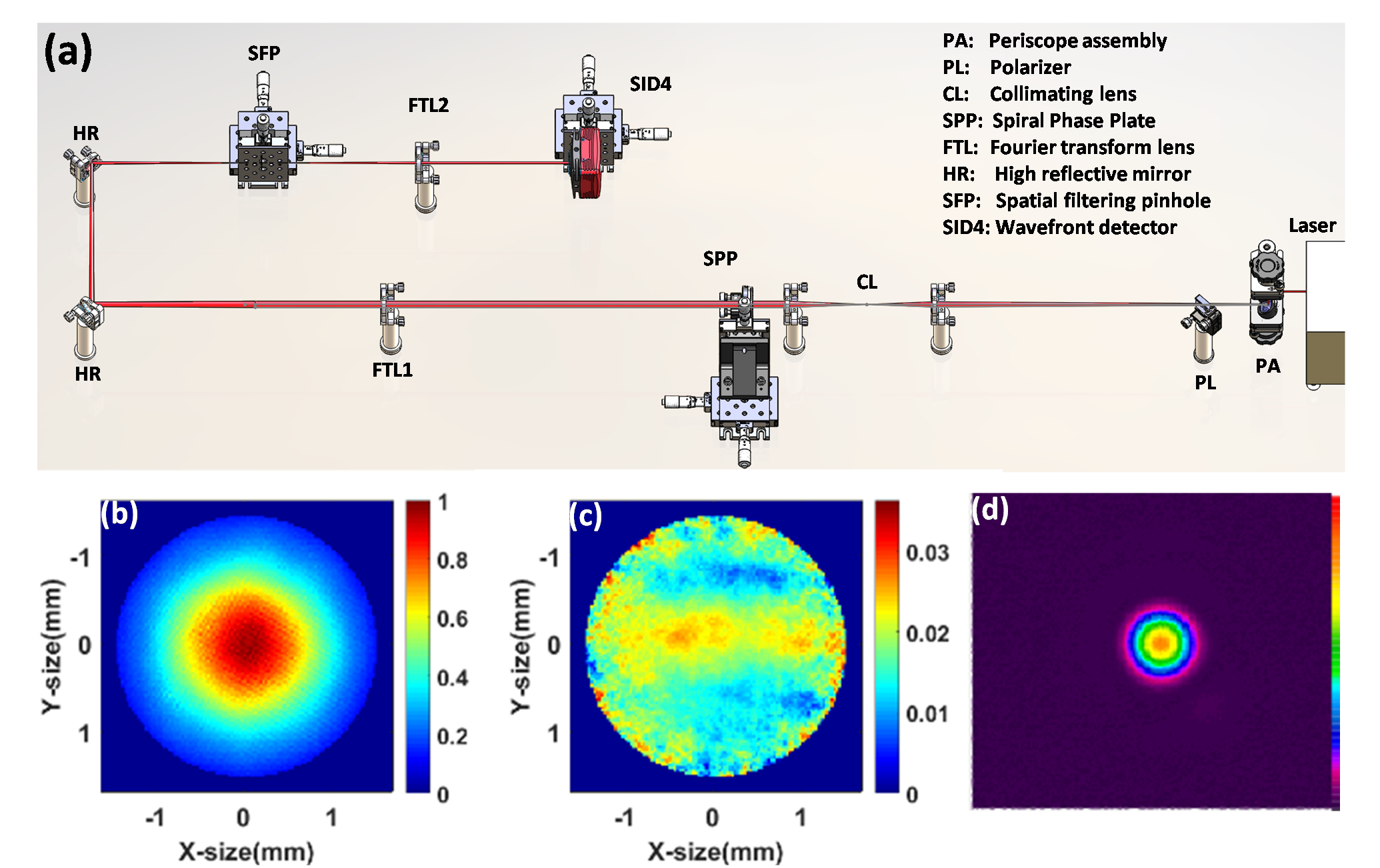The vortex beam with spiral wave front distribution, carrying the orbital angular momentum, is equivalent to adding torque to the beam. It is beneficial in a wide variety of such applications as the micro-particle manipulation, optical communications, image processing, quantum information and computation.
The transverse structure distribution of Gaussian Vortex (GV) beams will change rapidly at the initial stage of propagation. In many cases, this characteristic of a rapidly varying light intensity cross-sectional distribution is not needed. The Laguerre–Gaussian beam with more stable spatial structure is more suitable for specific applications. In addition, the Gaussian Vortex beam loses most of its energy during the implementation of direct intensity modification to obtain the Laguerre–Gaussian beam. Therefore, it is very important to find a simple and efficient way to generate Laguerre–Gaussian beams.
Recently, a research team from Shanghai Institute of Optics and Fine Mechanics of the Chinese Academy of Sciences had successfully extended the method of spatial filtering commonly used in laser systems to the shaping of Gaussian vortex beams, and obtained the Laguerre–Gaussian beam simply and efficiently. Their work was published on IEEE Photonics Journal.
In this work, the researchers found theoretically that spatial filtering did not affect the spiral wavefront characteristics of the vortex beam. On this basis, the relationship between the optimal aperture size in spatial filtering and the beam wavelength, radius, and lens F number was found by calculation and comparison. 
Fig.1. (a) Schematic diagram of the experiment.
(b) Near-field intensity distribution of the laser output beam.
(c) Near-field wavefront distribution.
(d) Far field focal intensity distribution.(Image by SIOM)
Meanwhile, they demonstrated experimentally that the beam with Gaussian intensity could be transformed into Laguerre–Gaussian beam with hollow ring intensity through spatial filtering, as shown in fig.1. The researchers obtained a fundamental Gaussian spot with a far-field ideal Gaussian spot distribution through a self-made Ti:Sapphire oscillator. Combined with a smoothly varying spiral phase plate, a standard Gaussian vortex beam was obtained.
After the spatial filtering device, the vortex beam of the Gaussian light intensity distribution was converted into a high-purity Laguerre Gaussian beam, as shown in fig.2. Consequently, the researchers explained it from the two aspects of frequency domain filtering and spatial convolution. 
Fig.2. Beam profiles of the GV beam and spatial filtered beam (Image by SIOM)
This method can be used to produce relativistic vortex beams with broad application prospects.
This work was supported by the National Natural Science Foundation of China and the Strategic Priority Research Program of the Chinese Academy of Sciences.
Article website:
https://ieeexplore.ieee.org/document/8693508
Contact:
Mr. Cao Yong
General Administrative Office
Shanghai Institute of Optics and Fine Mechanics, CAS
Email: caoyong@siom.ac.cn |







